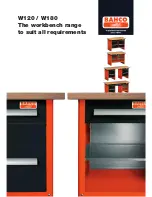
Using Families and Groups in the Tree View
Families are important elements of the Advanced Appliance Configuration Utility.
They specify the parameters that the Advanced Appliance Configuration Utility uses
to automatically categorize discovered appliances and to configure them with the
appropriate network settings. Family rules are defined solely by appliance type or
purpose. Each Family can contain only one type of appliance. The only way to
automatically apply predetermined network settings to newly installed and
discovered appliances is to create and use Families.
Appliances that match the rules criteria for a Family group can be automatically
configured to use predefined network settings. A Family can be configured to allow
appliances to use DHCP to configure their IP settings, or can be defined to
automatically assign IP settings (such as primary gateway and DNS server
addresses, assigning an IP address from a specified IP address range, and
specifying a subnet mask). Host names for discovered appliances can also be
defined so that they are allocated using either a prefix or appliance serial number.
The Advanced Appliance Configuration Utility is not the only way to configure
network settings. For example, network settings can be configured using Terminal
Services for Windows or by attaching a keyboard and mouse to the appliance and
using Windows Control Panel. If the appliance network settings have been
configured by a method other than using the Advanced Appliance Configuration
Utility, the appliance will be discovered by the Advanced Appliance Configuration
Utility and it will be added to an appropriate Family, if one exists. Appliances that
have been configured using a method other than the Advanced Appliance
Configuration Utility for which no appropriate family exists will appear in the
Orphaned Externally Configured Appliances group.
The Tree View Panel contains the following items:
v
All Appliances
Every discovered appliance is listed in the tree view under All Appliances.
v
Families
The Families group in the Tree View Pane shows all Families that have been
defined, with appliances that have already been assigned to each Family nested
beneath the Family name in the tree view. Families are defined by appliance
purpose, so all appliances that appear in a given family are of the same type. If
you select a Family from the Tree View Pane a description of the Family and the
rules that are used to define the selected Family are displayed in the Information
Pane. If you select an appliance from a Family in the Tree View Pane, the
selected appliance network settings are displayed in the Information Pane.
If you are not using DHCP, the Advanced Appliance Configuration Utility
automatically assigns one IP address per appliance, using available addresses
within the range defined in the Family rules. When a Family’s IP address range
has been exhausted, the Advanced Appliance Configuration Utility automatically
searches for other Families that have rules matching the appliance being
configured. If a matching Family with an available address is found, the appliance
will automatically be assigned to the Family that has available IP addresses. This
enables you to define multiple Families, each of which uses a set of
non-contiguous IP address ranges.
When an appliance is discovered on the network, the Advanced Appliance
Configuration Utility automatically searches all previously defined Families,
starting with the first Family listed in the Families tree view and moving
downward. Appliances are automatically added to the first defined Family that
matches the appliance purpose. Therefore, the order in which Families appear is
Chapter 3. Configuration, administration, and management
11
Summary of Contents for TotalStorage Network Attached Storage 300G
Page 1: ...TotalStorage Network Attached Storage 300G User s Reference V ersion 1 Release 1 GA27 4271 00...
Page 2: ......
Page 3: ...TotalStorage Network Attached Storage 300G User s Reference V ersion 1 Release 1 GA27 4271 00...
Page 8: ...vi 300G User s Reference...
Page 10: ...viii 300G User s Reference...
Page 14: ...2 300G User s Reference...
Page 32: ...20 300G User s Reference...
Page 38: ...26 300G User s Reference...
Page 62: ...50 300G User s Reference...
Page 85: ......
















































